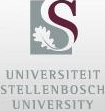In a landmark study published in Nature Genetics, Stellenbosch University (SU) has played a notable role in advancing the diagnosis of ultra-rare diseases. The TRANSLATE NAMSE study, involving researchers from 16 German university hospitals and SU, has successfully diagnosed 499 patients and identified 34 new genetic diseases, potentially revolutionizing genome diagnostics for rare disease patients in Germany.
Professor Shahida Moosa, head of Medical Genetics at Tygerberg Hospital and SU's Faculty of Medicine and Health Sciences, was the sole non-German researcher in this multi-centre study. "What is really impressive is the discovery of the 34 novel disease-causing genes," Moosa remarked.
The research, which began in 2017, aimed to enhance patient care through modern diagnostic concepts. Employing exome sequencing and GestaltMatcher, an artificial intelligence (AI) tool for analysing facial features of individuals with suspected rare genetic conditions, the study examined 1577 patients, including 1309 children.
Of the participants, 499 received molecular genetic diagnoses, with 370 distinct molecular genetic causes identified. The majority of these were ultra-rare disorders. The diagnostic process also uncovered 34 novel and 23 candidate genotype-phenotype associations, marking a significant advancement in the field.
Moosa joined the TRANSLATE NAMSE project in 2020, with the incorporation of GestaltMatcher. This AI tool, developed at the University of Bonn, was tested on a broad scale for the first time during this study. Moosa had previously implemented GestaltMatcher in the Undiagnosed Disease Programme (UDP) at SU, the first of its kind in sub-Saharan Africa.
The UDP, part of the Rare Disease Genomics in South Africa (RDGSA) research group, aims to provide correct diagnoses to patients with rare diseases. It has already made a significant impact, helping hundreds of individuals who have lived with undiagnosed conditions for years.
"The present analyses demonstrated that the novel structured diagnostic concept facilitated the identification of ultra-rare genetic disorders and novel gene-disease associations on a national level," Moosa explained. She emphasized how machine learning and AI tools improved diagnostic effectiveness and efficiency for ultra-rare genetic disorders.
Looking ahead, Moosa hopes to expand this work to benefit other parts of Africa, reducing the number of people suffering from undiagnosed rare diseases. She envisions healthcare services across the continent adopting this approach, with human and machine experts collaborating with patients and families to achieve diagnoses and contribute to the knowledge base on ultra-rare diseases.
"There are many novel disease genes still to be discovered in Africa," Moosa stated, "and it is only through active teamwork demonstrated by this project that we will be able to move this kind of discovery forward on the continent."
Image: The depicted images are photorealistic but synthetic. This means a portrait exhibits the characteristic facial features of a rare disease e.g. Cornelia de Lange Syndrome, but the individuals used for training the AI cannot be re-identified.

